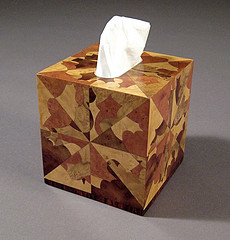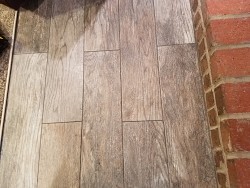Amazing Essential Oils to Treat Fall Allergies
 As the season changes, autumn is in the air -- and so too pollen, mold, and dust mites, all of which are powerful allergens. Pollen from goldenrod, that ubiquitous late-blooming weed, is the major source of autumnal outbreaks of allergic rhinitis, aka hay fever. Whatever the reason, fall allergies can make you miserable and reduce your ability to function normally. While antihistamines or steroid nasal sprays might work against some of your symptoms, they may cause drowsiness, dry mouth, mental confusion, and a whole host of other unwanted side effects. As an alternative, try natural essential oils to relieve fall allergy symptoms.
As the season changes, autumn is in the air -- and so too pollen, mold, and dust mites, all of which are powerful allergens. Pollen from goldenrod, that ubiquitous late-blooming weed, is the major source of autumnal outbreaks of allergic rhinitis, aka hay fever. Whatever the reason, fall allergies can make you miserable and reduce your ability to function normally. While antihistamines or steroid nasal sprays might work against some of your symptoms, they may cause drowsiness, dry mouth, mental confusion, and a whole host of other unwanted side effects. As an alternative, try natural essential oils to relieve fall allergy symptoms.
Allergy Symptoms
Explosive – achoo! -- sneezes; reddened, itchy, burning eyes; persistent cough; and a nose that runs like a water fountain are some of the most maddening symptoms of fall allergies. In addition, your throat may be constantly irritated, you might have deep dark circles under your eyes, and your head could feel as logy as if it were packed with wet sand. No matter how big a stock of tissues you lug around with you, it is never enough, and the skin around your nose becomes red and raw from constant blowing.
Essential Oils that Ease Allergies
Four essential oils which are extremely helpful in dealing with seasonal allergic reactions are lavender, lemon, peppermint, and eucalyptus. Lavender not only relieves the nasal congestion and headache which are hallmarks of hay fever, it also builds up the immune system. Lemon strengthens immunity and reduces phlegm. Peppermint opens up respiration, soothes congestion and headache, and combats infection. Eucalyptus eases breathing, soothes scratchy throat, and clears congestion. (It's an excellent treatment for symptoms of colds and flu, as well.)
All of these are safe for use on just about everyone, including small children, invalids, and the elderly. However, eucalyptus should never be ingested or applied to the skin at full strength as it can burn; dilute it first with water or a base oil. Peppermint may interfere with milk production and should be avoided by nursing mothers. Be sure to inform your regular health care provider when undergoing any alternative treatment.
How to Use Oils
1. Dry Inhale. The simplest method for using essential oil is to place a few drops on the palms of your hands, cup them around your nose, and dry inhale. A diffuser, either electric or candle-powered, will disperse your oils throughout the room where it is located, working to both relieve symptoms and cleanse the air. This is especially useful in areas with a high goldenrod count like Ohio, where pollen allergens will tend to collect under your Cleveland roof.
2. Moist Inhale. Put the oil in a cup of hot water, form a makeshift tent with a towel, and inhale the vapor. Apply oil to the bathroom shower head before taking a soothing hot shower. A very effective method of steam inhalation is a humidifier which is made for use with essential oils. This produces a steady stream of vapor containing the oil that will continue for several hours and will help you breathe ... and sleep ... easier.
3. By Mouth. There are 3 ways to take essential oils orally (purchase only certified pure therapeutic grade oils for this type of use). Place a few drops of the essential oils on your tongue and rinse your mouth with them. Alternatively, mix with water or another beverage and drink. Or put them into a gelatin capsule and swallow.
4. On the Skin. Absorb the oils in the form of a chest rub, by either applying the oil directly to your chest or blending strong essential oils with a tree oil such as almond or coconut. Other effective points of skin contact are the soles of feet (apply just before bedtime and cover with socks), the throat, and the temples. Best of all, get someone to give you an essential oil massage!
Laura Firszt writes for networx.com.
Updated April 25, 2018.
Looking for a Pro? Call us (866) 441-6648

Heating & cooling Average Costs
HVAC Contractors Experiences

Hiring A Great Landscaper Was Almost Too Easy, Even Long Distance

Tile Floor Looks Like Wood, Stands Up To Life With Kids And Dogs



